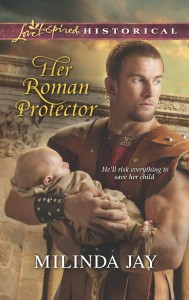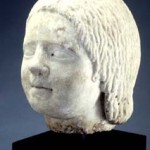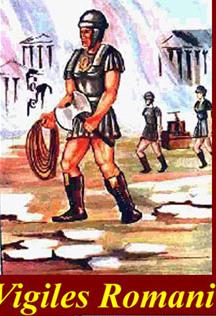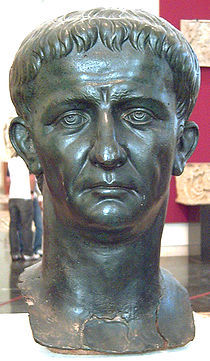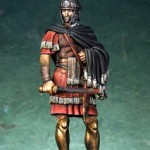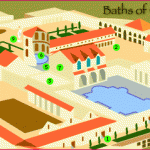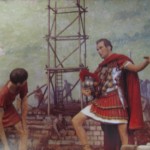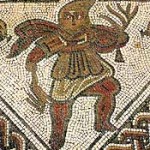A few years ago, while researching for my dissertation I came across the alarming fact that in the ancient world, infant exposure was an accepted practice. I had just given birth to my third child, and I was horrified at the thought of carrying a baby for nine months, and then being forced to send it away to die or be sold as a slave.
I knew then that the thousands of women who had been forced to give away their babies deserved to have their stories told. Thus, the idea for Baby Villa was born.
In Rome, it was the father who determined whether the child lived or died. After a baby was born, the midwife laid the child before the father. If the father picked up the child, the child was considered a part of the family. If not, the child was exposed.
Historians tell us there was a particular place in the city of Athens where unwanted babies were abandoned. The same is true in Rome where unwanted infants might be left in the vegetable market. If no one picked the child up to be raised as a slave or foster child, the infant died.
Infants were exposed for a variety of reasons: if the family couldn’t afford to raise the child, if the child was deformed, or if the family didn’t want to share wealth with yet another heir.
Orphanages as we know them did not exist until after 313 A.D. and the legalization of Christianity in the Roman Empire. It is entirely possible that earlier women who had the means, and understood and absorbed the teachings of Christ might create a place for abandoned infants and their grieving mothers. Like the shepherd in Oedipus Rex who takes pity on the baby exposed on the mountain, I suspect there were wealthy believing women in the Ancient World who took pity on exposed and abandoned babies and created a home for them in their sprawling villas. I imagine Scribonia to be just that sort of woman.
Jews and Christians
Those who followed Jesus during his ministry and for several decades after were devout Jews who accepted Jesus as the Messiah. It was Paul’s ministry that began the conversion of the Gentiles. History tells us that Paul’s conversion occurred in about 34 A.D. By 50 A.D., there were enough Christian converts to necessitate the council of Jerusalem to determine how much of the Jewish law Gentile converts were required to follow.
We have but to read the New Testament to see the importance of women in the early church. According to historians, wealthy women helped finance the ministry of Christ as well as the missionary journeys of Paul. We know from the NT that women held meetings in their homes helping to spread the new faith.
By the first century A.D., Rome itself had a thriving Jewish population. Transportation and communication in the Roman Empire was reliable and sophisticated making Paul’s missionary journeys possible and the spread of the gospel easier.
We know that Priscilla and Aquilla both lived in Rome before Claudius expelled all Jews in 49 A.D. It is entirely possible that they met with other Jewish followers of Christ within Rome before their expulsion.
The City of Rome
You might be surprised at the many “modern” day things that the people of Rome lived with. To begin with, there were as many as 1 million people living in Rome in the first century A.D. Conditions were crowded and smelly. There were apartment buildings, called insulae, and firemen called vigiles. There were fast food restaurants to feed the swarming working masses the meals they had neither the time nor the space to cook on their own. Because most wealthy Romans preferred sparsely decorated rooms, they used folding chairs and tables. Bathing was a daily necessity and it took place in enormous bathhouses that doubled as gymnasiums. Swimming was common. Even women learned to swim—indeed when the Emperor Nero tried murdering his mother, Agripinna, she saved herself by swimming away from a sinking ship.
Below, I would like to share with you some of the sources for information in my book.
Infant Exposure
The PBS Rome in the First Century website is a rich repository of all things Roman. Here, you will find information on the Roman notion of infancy.
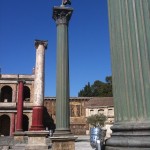
http://www.pbs.org/empires/romans/empire/family.html
Roman Childhood
Based on the statue of a young girl, this article explores what her life might have been.
http://www.cornellcollege.edu/classical_studies/women/boyles/
Vigiles
An excellent article on the purpose and organization of the vigiles
Rome
Brief history of the Julio/Claudians with excellent slideshow of art relics
http://www.metmuseum.org/toah/hd/roem/hd_roem.htm
Excellent Lesson Plans for Rome in the First Century
http://www.pbs.org/empires/romans/educators/index.html
Claudius and Christianity
http://www.biblicalstudies.org.uk/pdf/bjrl/claudius_bruce.pdf
Praetorian Guard
http://www.unrv.com/military/praetorian-guard.php
Roman Bathhouses
A day at the baths: this interactive website presented by PBS shows each section of a Roman bathhouse and what a Roman might do there.
http://www.pbs.org/wgbh/nova/lostempires/roman/day.html
Roman Villas
Interactive tour of an ancient Roman Villa
http://www.vroma.org/~bmcmanus/house.html
Divorce in the Roman Empire
http://www.pbs.org/empires/romans/empire/weddings.html
http://www.womenintheancientworld.com/divorceinancientrome.htm
Roman Britain
Trade Routes
A map of the trade routes in the first century AD
http://www.francoermarmista.com/gif/trade_routes.gif
Merchant Ships
An interesting article about Roman merchant ships with illustrations
http://eglewis.blogspot.com/2012/05/roman-merchant-ships-warhorses-of.html
Roman Cities in Ancient Britain
Colchester:
http://www.bbc.co.uk/history/ancient/romans/colchester_01.shtml
Londinium:
http://www.museumoflondon.org.uk/archive/exhibits/hslondon/roman/index.htm
as it may have looked in AD 60:
http://www.museumoflondon.org.uk/archive/exhibits/hslondon/arch/founding.htm
Portus Dubris (Currently Dover):
http://en.wikipedia.org/wiki/Dubris
Roman Soldier’s letters from Ancient Britain: The Vindolanda Tablets
http://www.bbc.co.uk/history/ancient/romans/vindolanda_01.shtml
Roman Baths in Britain
http://www.bbc.co.uk/ahistoryoftheworld/objects/y_6F2ZbGRE2NDuPsxm5ZHg
Ancient Wool Trade, Britain:
http://www.sheepcentre.co.uk/wool.htm
The Birrus
http://en.wikipedia.org/wiki/Birrus

